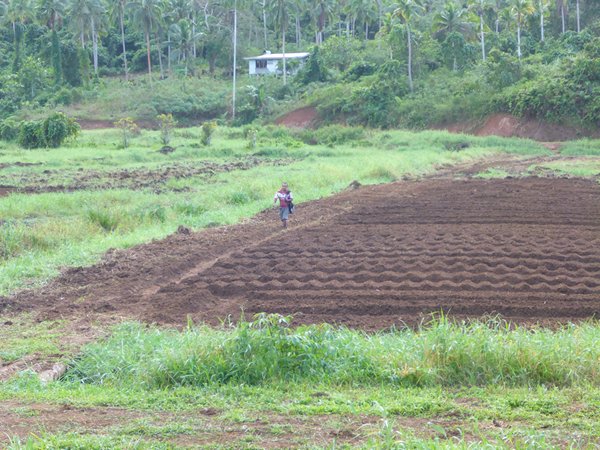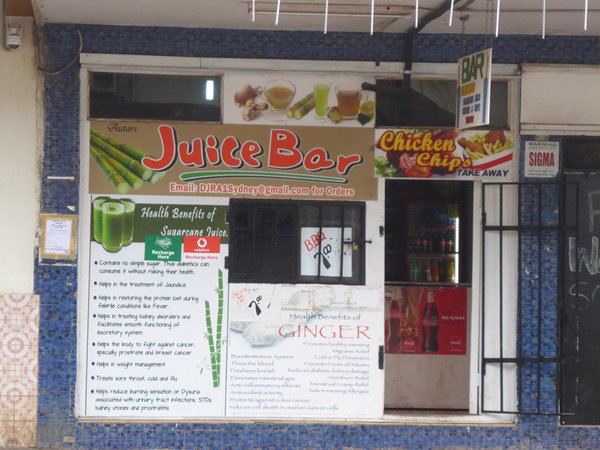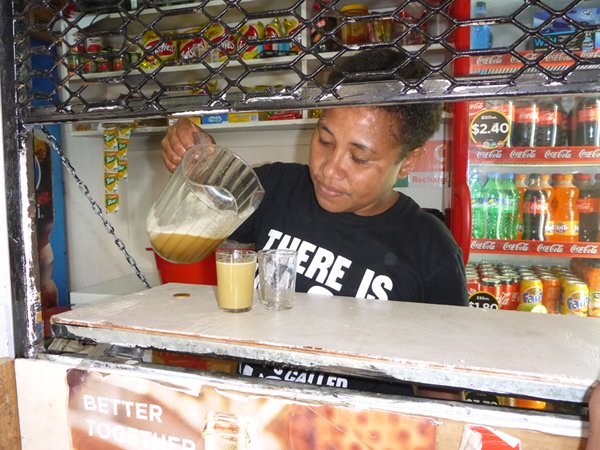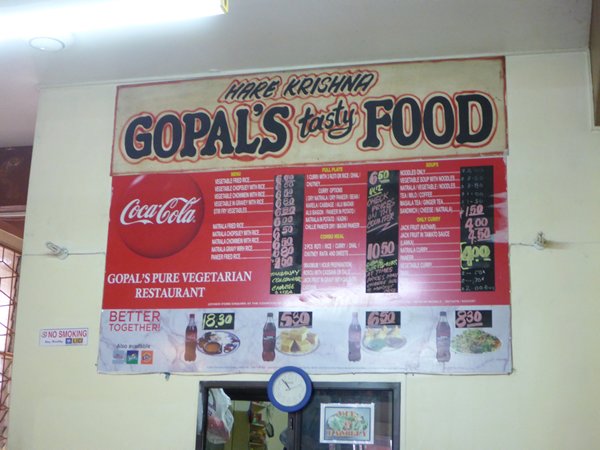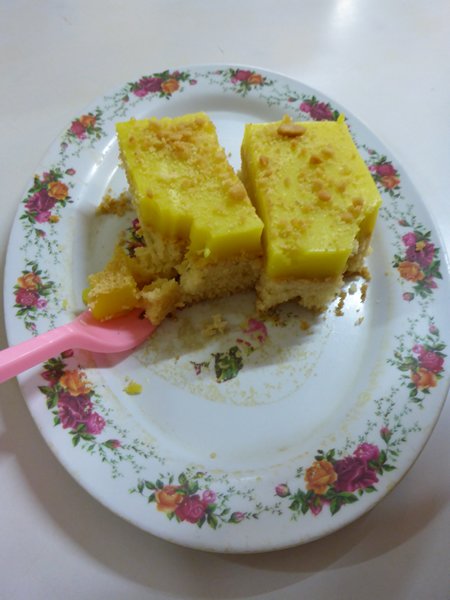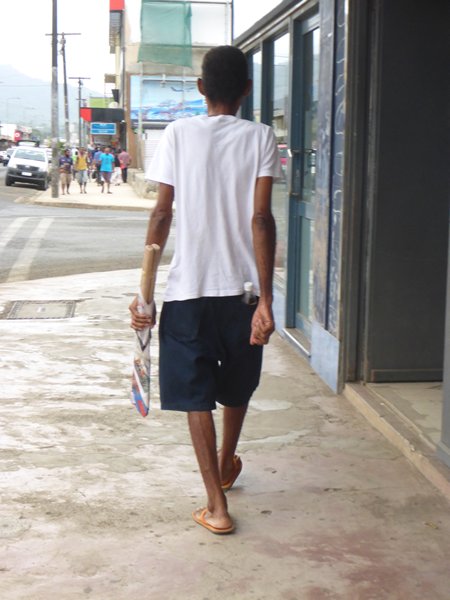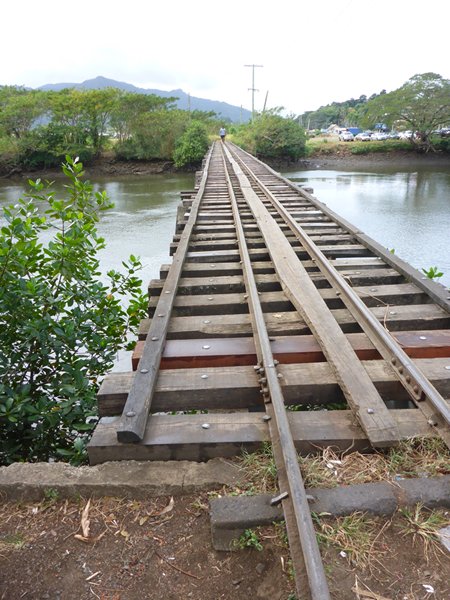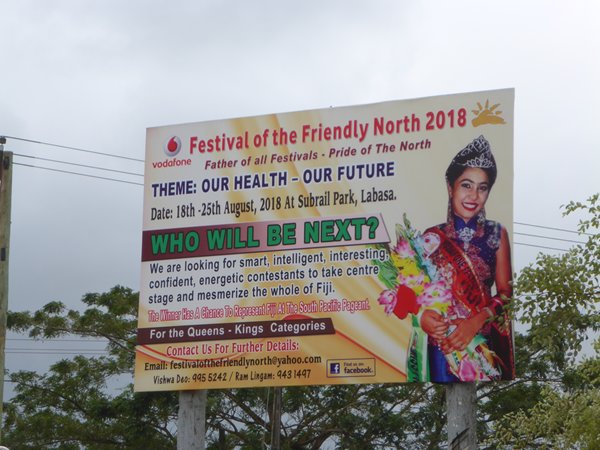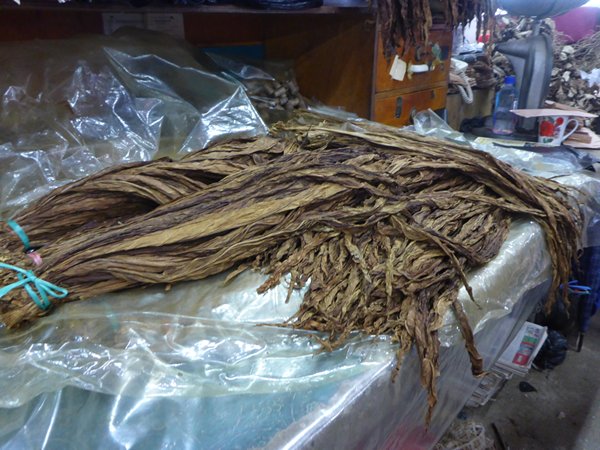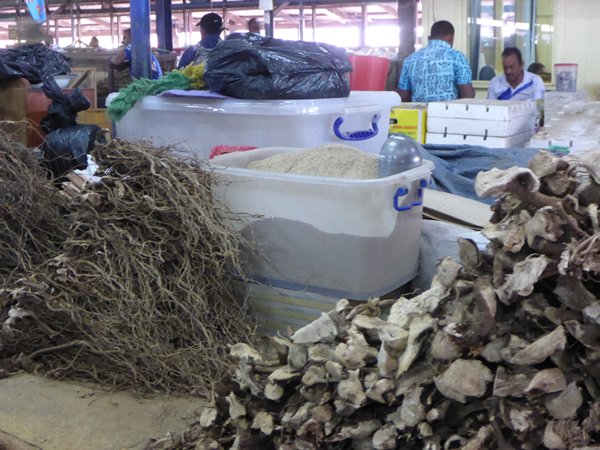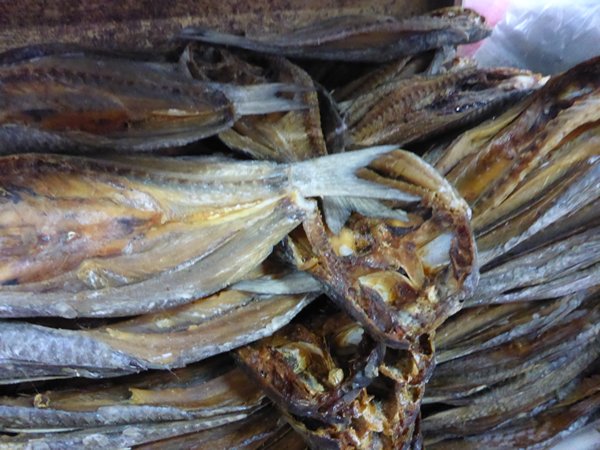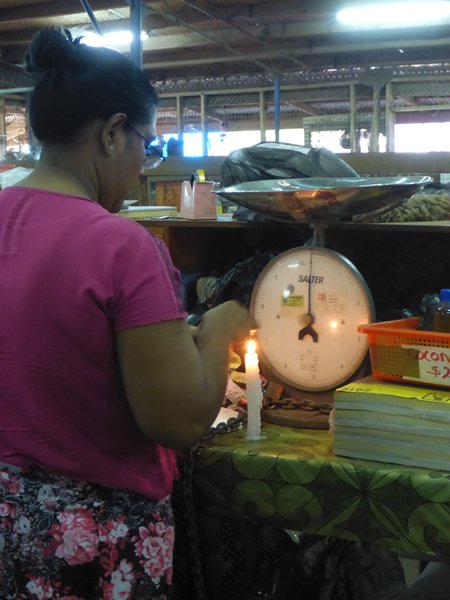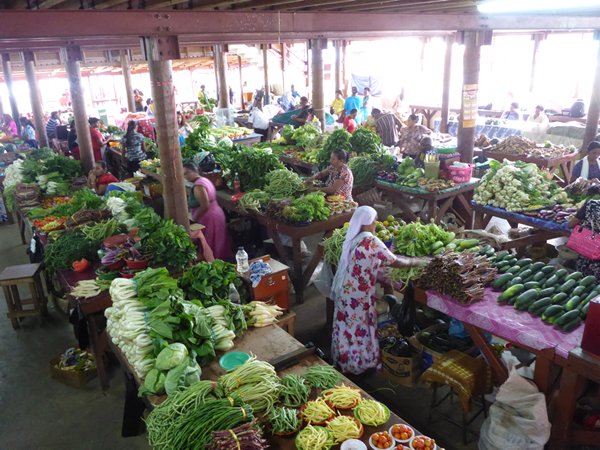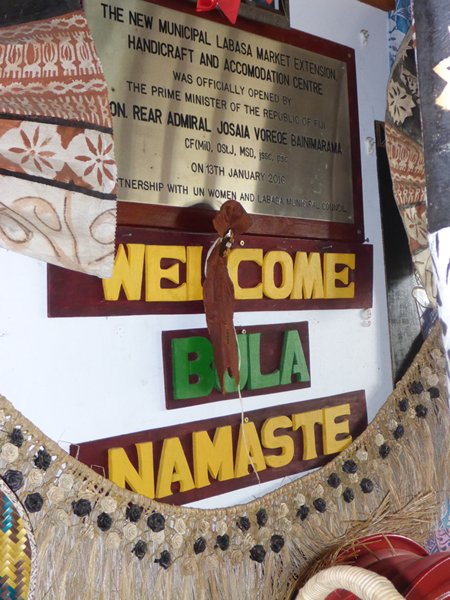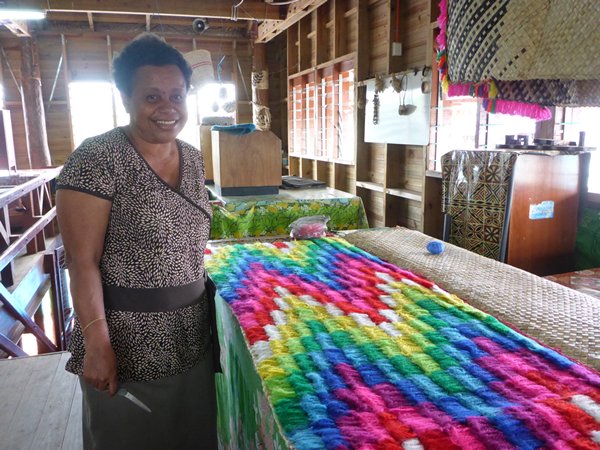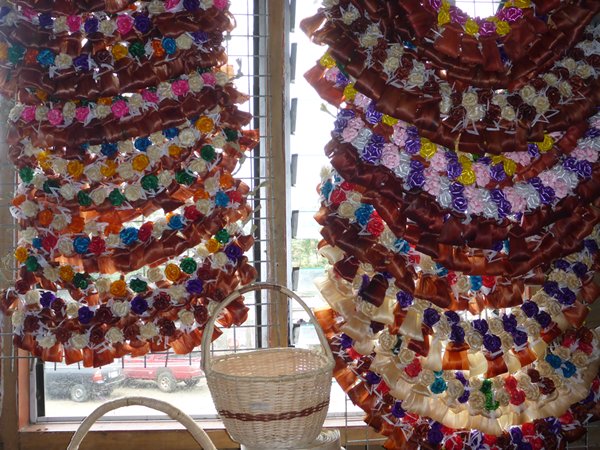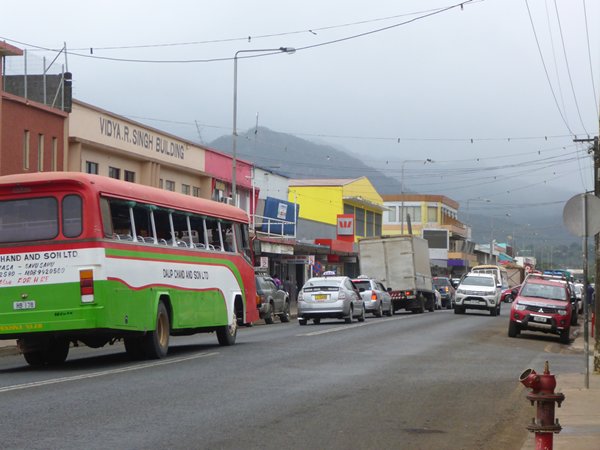Lighting up in Labasa

|
Lighting up in Labasa This time getting up early and meeting Mark at the bus station for the 7.30am bus load of school children, teachers marking the students work and business people off to the other side of the island. Starting before daylight people were well into their working day locally as is common in these cooler hours in the tropics. I love that time of day too for writing and pottering between the chart table and galley. The soil is so fertile that market gardening is a good life for farmers and the markets are full with a good variety of largely organic day fresh vegetables. The fields are neat with their rows of green plants growing. Goats graze everywhere, but not on the neat fields of course! Back in 1945/6, long before my time you understand, when many Indian Muslims came here after Churchill’s Partition of India, the rural community must have found very similar conditions for farming as they had known back home. There seems to be a mixture of Fijian and Indian farmers and I wondered how well they get on together. Apparently if Fijians intermarry they lose their land ownership rights, I bet that causes problems. I also wondered idly, as our little red bus struggled up over the mountain ridge that divides the island north to south, if we might see Julie from Palmlea Lodge again doing her shopping. Julie likes it because all she needs to purchase for her dream home and business, the Lodge, is there. Visiting the city a couple of days before was a bit of a culture shock as one could hardly move for the crowds, it seemed to be like all the cruising sailor likes to get away from but I couldn’t wait to get back. The atmosphere was of friendly people working hard and lots going on to watch. The ‘feel’ of a working community busy every day with the high demand for their inexpensive goods was invigorating. Of course there is struggle involved but comradeship as well, interchange and good humour. How much the willingly unemployed miss. How much more affluent supermarket societies miss. I’ve never been to India but this is like a small dose as the town is culturally more Indian than Fijian. I imagine that can cause tension between the two races as well. A quick look around the market with Mark and we separated, agreeing to meet at the bus station again at 12.30pm for a taxi to the sugar mill. Wandering down the shady side of the main street we noticed the sugar cane loads towed by lorries and tractors seemed to alternate, ones with cane lengths lashed down onto flat beds and those with cages full of shorter irregular shaped pieces. We would find out why later. A young Indian man stepped out of a doorway on seeing us reading about the sugar cane juice drinks he was selling at The Juice Bar. “The sugar cane drink with ginger is very nice, you want to try some?” For $1fj we drank this refreshing and healthy (he claimed) drink that looked like a tiny glass of unfermented Guinness. It was really pleasant and refreshing and not too sweet at all. More of a look around confirmed that along with our previous visit after lunch at Palmea Lodge we pretty well knew the busiest end of the town so decided to try a coffee and cake in the Hare Krishna Restaurant. Its early days but my research so far suggests that these are a chain of loosely religiously based entirely vegetarian and partly vegan restaurants that are right up our street (!). Not trying to overstate the case at all but these people are so congenial and friendly it makes a city visit a pleasure. We shared the cake and along with two coffees it came to $3.50fj (£1.30) Back into the merry throng and a detour to the little railway track where it crosses the river to the mill. Then we wandered through a short mall and just as we were about to emerge Julie walked in (!) and we had a short chat. She was on her way to collect a TV aerial as she and Joe realised guests might like to view such things as sports, The Rugby World Cup for example, on their visits. I can see why she resisted for so long, their patch of paradise being an almost total escape from the rest of the world, but choice is also nice. So back to the market for a more thorough exploration on top of the vast array of healthy fresh and colourful vegetables, peppers, fruit and spices, the latter being carefully sealed in little plastic bags using a single candle flame, whole leaves of locally grown tobacco, or torn strips wrapped in newspaper and smoked or rolled up and threaded onto wool. Wooden glazed cabinets full with layers of bronze, eagle winged dried fish and in plastic boxes piles of dried, ground kava ready for mixing with room temperature water and sieving through fine fabric to produce the lip numbing drink that is historically so popular here (and all over the southern hemisphere from the Indians of Ecuador westwards from what we could see) and now acts as a healthy alternative to alcohol, which the Fijians cannot take like most indigenous people. The Kava drink as we made it and strained it through one of Rob’s socks, is bitter and tastes slightly of aniseed. Somebody, probably Curly, told us about the new Handicrafts Market opened two years ago on the top floor of the market. Reaching the top of the stairs there are tables along the side where a lady was decorating the side ends of a woven matt with a trim of looped wool in a variety of bright colours. The pattern she was creating was not immediately obvious. We chatted and I took a photo and it was the photo that revealed the dramatic diagonal pattern she was creating, even she was impressed with what the camera lens achieved. A young girl stood beside a table of intricate garlands of flowers twisted and turned from leaf blades and dyed bright colours lying on a base of pale yellow matting. We decided to buy one on our return from the Sugar Mill in the two hours we thought we’d have free for some leisurely shopping. The young lady said she and her mum would be there until 5.00pm. A quick snack of dried peas in their little candle flame sealed bag and Indian vegetable nibbles deep fried in breadcrumbs and washed down with boat water and we were ready for Mark and the taxi.
|
